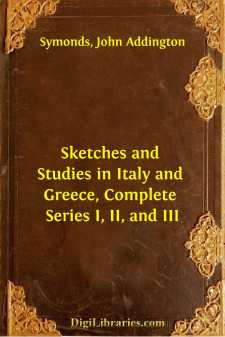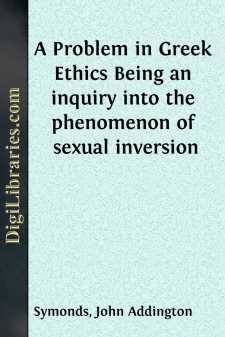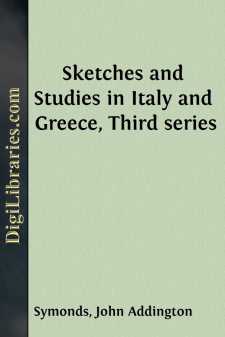Categories
- Antiques & Collectibles 13
- Architecture 36
- Art 48
- Bibles 22
- Biography & Autobiography 813
- Body, Mind & Spirit 141
- Business & Economics 28
- Children's Books 12
- Children's Fiction 9
- Computers 4
- Cooking 94
- Crafts & Hobbies 4
- Drama 346
- Education 46
- Family & Relationships 57
- Fiction 11826
- Games 19
- Gardening 17
- Health & Fitness 34
- History 1377
- House & Home 1
- Humor 147
- Juvenile Fiction 1873
- Juvenile Nonfiction 202
- Language Arts & Disciplines 88
- Law 16
- Literary Collections 686
- Literary Criticism 179
- Mathematics 13
- Medical 41
- Music 40
- Nature 179
- Non-Classifiable 1768
- Performing Arts 7
- Periodicals 1453
- Philosophy 64
- Photography 2
- Poetry 896
- Political Science 203
- Psychology 42
- Reference 154
- Religion 513
- Science 126
- Self-Help 83
- Social Science 81
- Sports & Recreation 34
- Study Aids 3
- Technology & Engineering 59
- Transportation 23
- Travel 463
- True Crime 29
Renaissance in Italy, Volumes 1 and 2 The Catholic Reaction
Categories:
Description:
Excerpt
CHAPTER I
THE SPANISH HEGEMONY
Italy in the Renaissance—The Five Great Powers—The Kingdom of Naples—The Papacy—The Duchy of Milan—Venice—The Florentine Republic—Wars of Invasion closed by the Sack of Rome in 1527—Concordat between Clement VII. and Charles V.—Treaty of Barcelona and Paix des Dames—Charles lands at Genoa—His Journey to Bologna—Entrance into Bologna and Reception by Clement—Mustering of Italian Princes—Francesco Sforza replaced in the Duchy of Milan—Venetian Embassy—Italian League signed on Christmas Eve, 1529—Florence alone excluded—The Siege of Florence pressed by the Prince of Orange—Charles's Coronation as King of Italy and Holy Roman Emperor—The Significance of this Ceremony at Bologna—Ceremony in S. Petronio—Settlement of the Duchy of Ferrara—Men of Letters and Arts at Bologna—The Emperor's Use of the Spanish Habit—Charles and Clement leave Bologna in March, 1530—Review of the Settlement of Italy effected by Emperor and Pope—Extinction of Republics—Subsequent Absorption of Ferrara and Urbino into the Papal States—Savoy becomes an Italian Power—Period between Charles's Coronation and the Peace of Cateau Cambresis in 1559—Economical and Social Condition of the Italians under Spanish Hegemony—The Nation still Exists in Separate Communities—Intellectual Conditions—Predominance of Spain and Rome—Both Cosmopolitan Powers—Leveling down of the Component Portions of the Nation in a Common Servitude—The Evils of Spanish Rule.
In the first volume of my book on Renaissance in Italy I attempted to set forth the political and social phases through which the Italians passed before their principal States fell into the hands of despots, and to explain the conditions of mutual jealousy and military feebleness which exposed those States to the assaults of foreign armies at the close of the fifteenth century.
In the year 1494, when Charles VIII. of France, at Lodovico Sforza's invitation, crossed the Alps to make good his claim on Naples, the peninsula was Independent. Internal peace had prevailed for a period of nearly fifty years. An equilibrium had been established between the five great native Powers, which secured the advantages of confederation and diplomatic interaction.
While using the word confederation, I do not, of course, imply that anything similar to the federal union of Switzerland or of North America existed in Italy. The contrary is proved by patent facts. On a miniature scale, Italy then displayed political conditions analogous to those which now prevail in Europe. The parcels of the nation adopted different forms of self-government, sought divers foreign alliances, and owed no allegiance to any central legislative or administrative body. I therefore speak of the Italian confederation only in the same sense as Europe may now be called a confederation of kindred races.
In the year 1630, when Charles V. (of Austria and Spain) was crowned Emperor at Bologna, this national independence had been irretrievably lost by the Italians....












